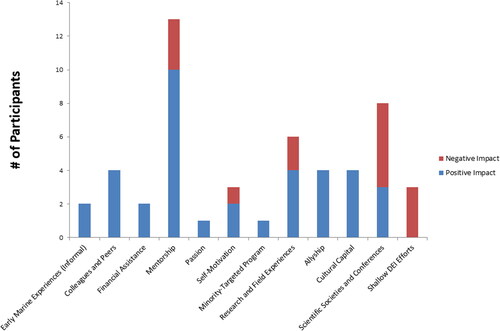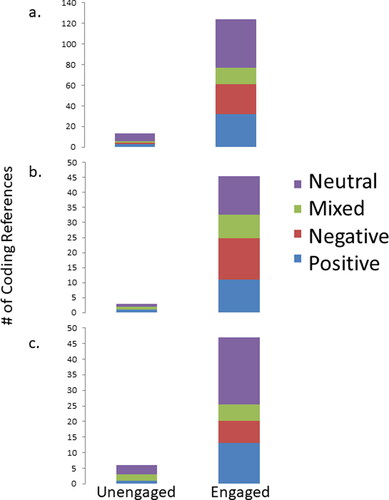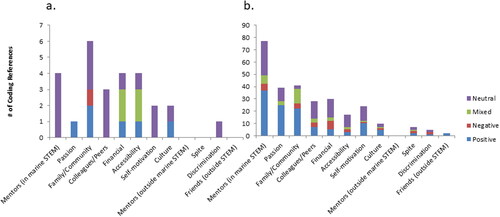Figures & data
Figure 1. Figure showing the framework used for this study which was a combination of Astin’s Input-Environment-Output framework and Social Cognitive Career Theory.
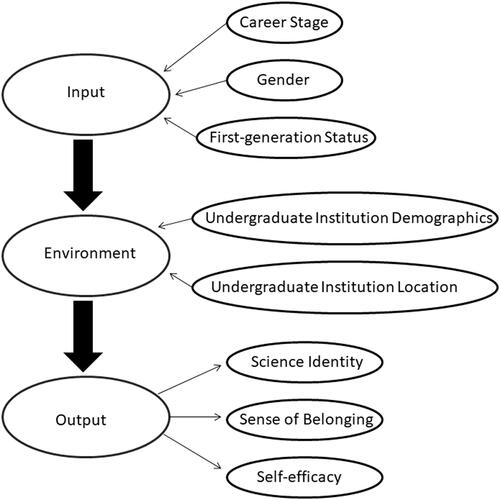
Table 1. Table showing the demographic breakdown of the 47 participants.
Figure 2. Graph showing the number of references to and sentiments toward a) sense of belonging, b) self-efficacy, and c) science identity for the various career stages.
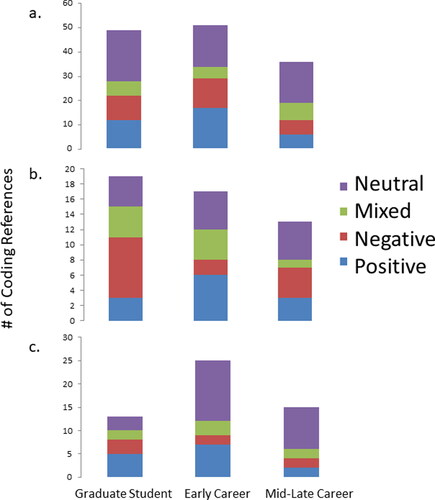
Figure 3. Graph showing the number of references to and sentiments toward a) sense of belonging, b) self-efficacy, and c) science identity for women and men.
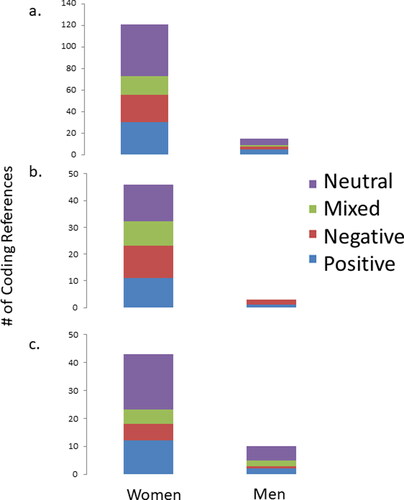
Figure 4. Graph showing the number of references to and sentiments toward various factors of persistence for a) men and b) women.

Figure 5. Graph showing the number of references to and sentiments toward a) sense of belonging, b) self-efficacy, and c) science identity for participants who identify a first-generation collefirst-generationge students and those who do not identify as first-generation college students.
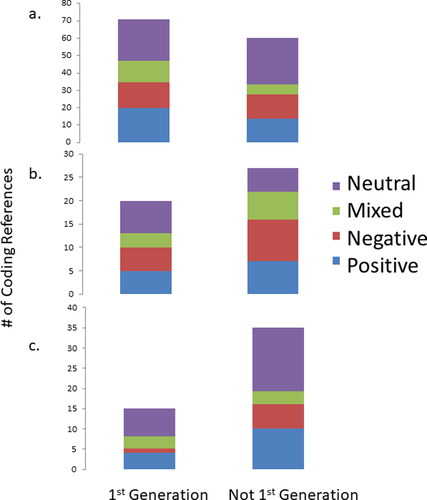
Figure 6. Graph showing the number of references to and sentiments toward various factors of persistence for participants who a) identify as first-generation college students and b) do not identify as first-generation college students.
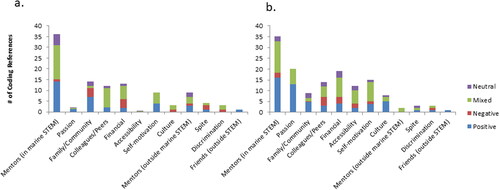
Figure 7. Graph showing the number of references to and sentiments toward a) sense of belonging, b) self-efficacy and c) science identity for participants who attended predominantly white undergraduate institutions (PWI), predominantly BIPOC undergraduate institutions (BIPOC), and predominantly white undergraduate institutions that had a BIPOC-targeted program (PWI+).
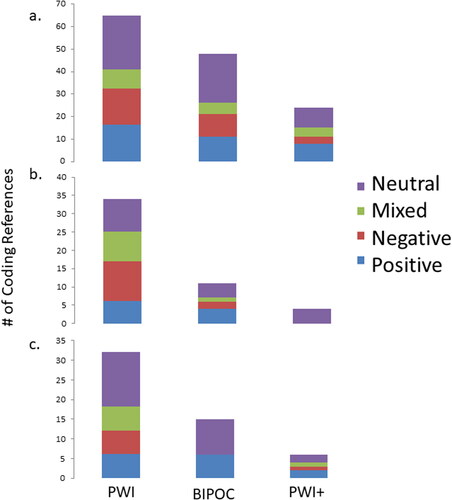
Figure 8. Graph showing the number of references to and sentiments toward various factors of persistence for participants who attended undergraduate institutions that were a) predominantly white, b) predominantly BIPOC, or c) predominantly white with a BIPOC-targeted program.
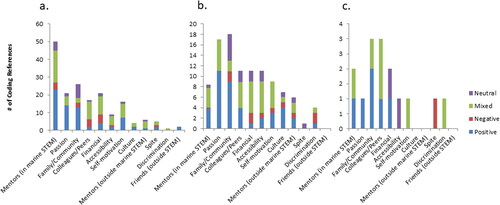
Figure 9. Graph showing the breakdown of where each of the participants completed their undergraduate studies.
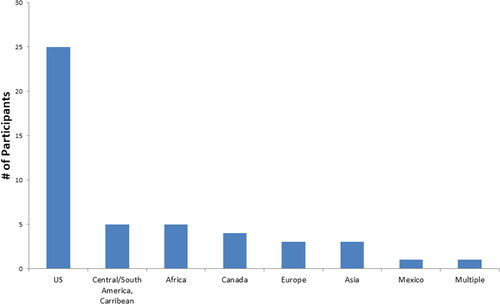
Figure 10. Graph showing the number of references to and sentiments toward a) sense of belonging, b) self-efficacy, and c) science identity for participants who completed their undergraduate studies in the United States and outside of the United States.
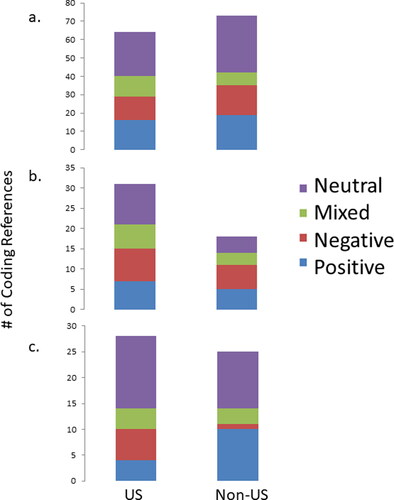
Figure 11. Graph showing the number of references to and sentiments toward various factors of persistence for participants who attended undergraduate institutions that were a) in the United States or b) not in the United States.
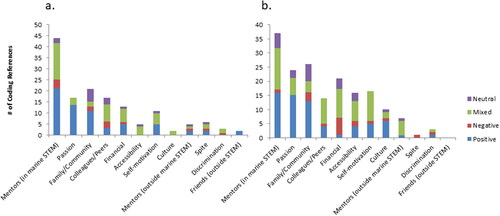
Figure 12. Graph showing the number of participants who mentioned various interventions as having either a negative or positive impact on the cognitive-personal outcomes.
